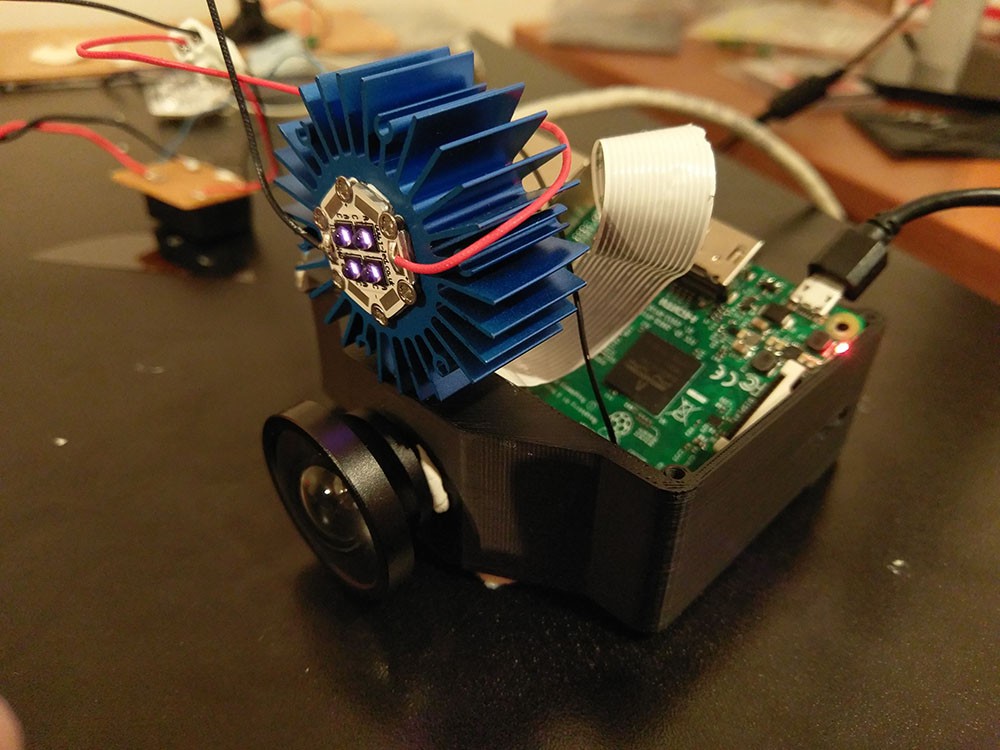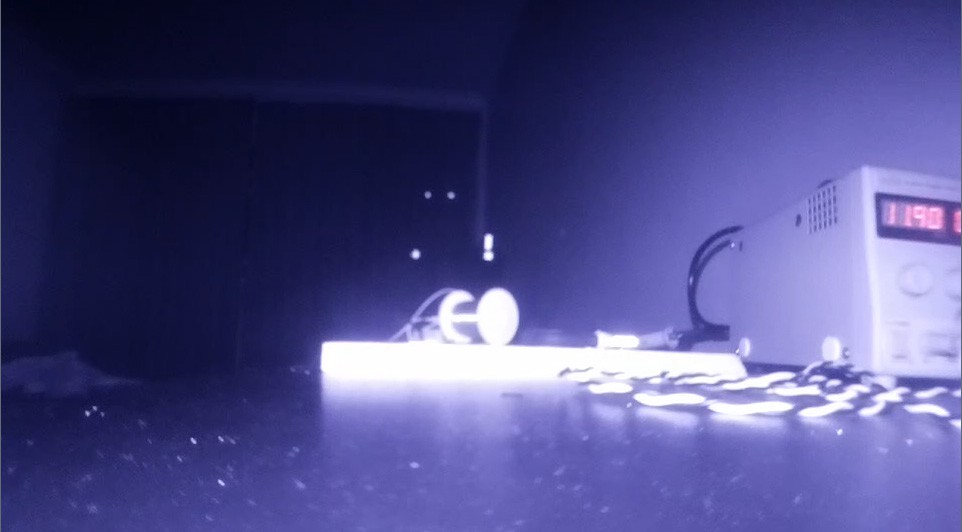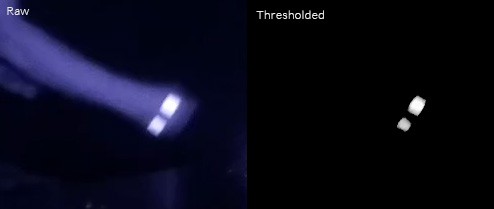The LED active markers are a very viable solution for motion capture, but I'd like to explore the alternative of using reflective passive markers. These markers are small spherical objects covered in a retro-reflective material which means they don't need any batteries to operate, which is nice when you need ~40 per actor. The idea is to shine a light source on the markers so they become highly visible when compared to the background. For the retro-reflectivity to be effective the light source must be as close to the camera sensor as possible. It is popular for motion capture cameras to use infra-red illumination (IR) instead of visible light, which gives an advantage when it comes to cutting out unwanted light sources. It also simply creates a nicer environment to work in since you don't have all these spotlights shining at you.

This test rig uses a very powerful IR LED array. I don't know the exact specs (I got it from a friend who had it lying around) but it happily consumes 12 Watts continuously - hence the rather generous heat sink. I found some really cheap reflective tape and attached a few squares to the back of the room which is 4m away from the test rig.

You can definitely make out the reflective tape in the background. In another test I attached a couple squares to my hand and moved as fast as I could to check exposure issues.

Note that these recordings were made in the dark (no visible light) so the only light you see is infrared. There is definitely more light than needed coming from these LEDs, they light up a significant portion of the room. The reflective tape could also definitely be of higher quality.
As a side note, I was driving the LEDs with the PWM on the PI and using the camera syncing trick I wrote about in a previous log. The black band that you see in the video is due to my really budget synchronization algorithm, and represents time where the camera caught the LED while it was off. It's a very nice trick to reduce power consumption on the LEDs and the visible brightness to the camera is identical as if the LEDs were continuously held on.
So the question becomes, what sort of IR solution would be appropriate for the Pi? I picked up a https://www.pi-supply.com/product/bright-pi-bright-white-ir-camera-light-raspberry-pi/ as it was easy to get hold of locally. It's a self assembly kit, and was the first thing I've ever soldered. As a software guy primarily I don't get the opportunity to mess with building electronics very often. For this project the Bright Pi doesn't generate nearly enough illumination and suffers from unacceptably narrow beam LEDs. There are a few nice IR rings available that are intended to be used with security cameras, but this all got me thinking. Why not make my own IR ring circuit board? The Bright Pi is incredibly simple and even though I know very little about electronics I could follow what was happening on the board. I've always wanted to design my own pcb and this seems like a good opportunity to learn.
 Robert Gowans
Robert Gowans
Discussions
Become a Hackaday.io Member
Create an account to leave a comment. Already have an account? Log In.